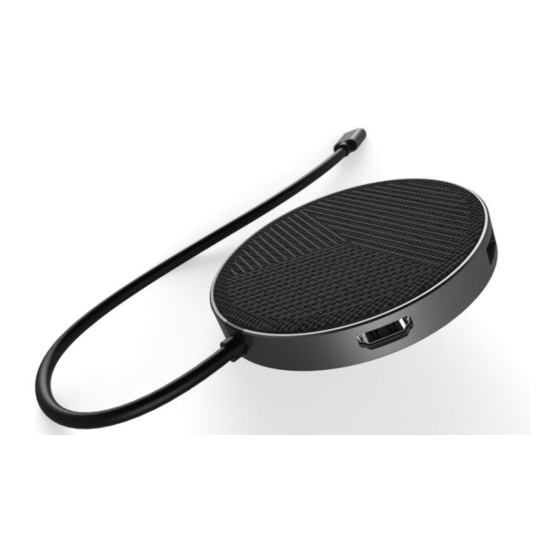Table of Contents
Advertisement
Quick Links
Advertisement
Table of Contents

Summary of Contents for DNS CK102A
- Page 1 USB 3.1 Type-C to USB2.0x2+USB3.0+HDMI+ Charging+Wireless Charging User Manual...
- Page 2 USB 3.1 Type-C to USB3.0+HDMI +Wireless Charging +Type-C Charging Contents 1.0 INTRODUCTION ..........1 2.0 FEATURES ............1 3.0 SPECIFICATIONS ..........2 4.0 PACKAGE CONTENTS ........2 5.0 OPERATION ............ 2 6.0 CONNECTION DIAGRAM ........3 7.0 REMARKS............4...
- Page 3 USB 3.1 Type-C to USB3.0+HDMI +Wireless Charging +Type-C Charging USB 3.1 Type-C to USB2.0x2+USB3.0+HDMI+ Charging+Wireless Charging DEAR CUSTOMER Thank you for purchasing this product. For optimum performance and safety, please read these instructions carefully before connecting, operating or using this product. Please keep this manual for future reference.
- Page 4 USB 3.1 Type-C to USB3.0+HDMI +Wireless Charging +Type-C Charging 3.0 SPECIFICATIONS Input/Output Connector Input USB-C Male x1 Output HDMI Female x1 USB-C Female x1 USB 3.0 Female x1 USB 2.0 Female x2 Resolutions Resolutions HDMI /F: Max up to 4Kx2K@30Hz PD port (Output power) Max up to 60W(20V/3A) Warranty...
- Page 5 USB 3.1 Type-C to USB3.0+HDMI +Wireless Charging +Type-C Charging 6.0 CONNECTION DIAGRAM 7.0 REMARK 1) In order to make wireless charging more stable, it is recommended not to use the HDMI interface at the same time. 2)Do not allow anything (such as combustible, needle) or any liquid (such as water, drink) to fall into or seep into the product.
- Page 6 USB 3.1 Type-C to USB3.0+HDMI +Wireless Charging +Type-C Charging FCC Compliance Statement This device complies with Part 15 of the FCC Rules. Operation is subject to the following two conditions: (1) this device may not cause harmful interference, and (2) this device must accept any interference received, including interference that may cause undesired operation.








Need help?
Do you have a question about the CK102A and is the answer not in the manual?
Questions and answers